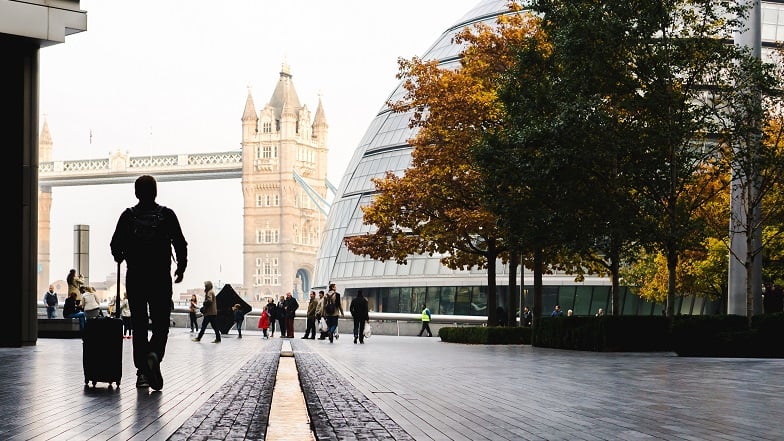Record breaking tourism in Vietnam – The Risks
For decades after the Vietnam war the country was neglected, a no-go area for tourists. Then it slowly became a favourite on the gap year trail, and the rest is history. These days Vietnam welcomes more foreign visitors than ever, a record high of 1.2 million in February 2017 alone, representing more than 42% more than the same time last year and a dramatic 20% hike compared to January 2017.
Every year British nationals make more than 200,000 visits to Vietnam, and most go smoothly. But there are a few key health, safety and cultural recommendations to bear in mind.
A new code of conduct for tourists, travel operators and locals
The nation’s tourist trend is so strong that the Vietnamese government has just released a special Code of Conduct for tourists, twenty key points of etiquette to observe. The recommendations also advise local service providers how to behave, laying out a series of ‘professional and ethical’ standards to meet when interacting with tourists. The guidelines for tourists include recommendations about queuing, appropriate dress, responsible drinking, local laws to observe, waste and littering, and the consumption of ‘wildlife products’. As the Travel Daily Media website (http://www.traveldailymedia.com/248231/vietnam-publishes-tourist-code-of-conduct/) says:
“Developed by the country’s Ministry of Culture, Sports & Tourism, the code applies to domestic and international tourists, tour operators and even locals at tourism spots, and focuses on cultural and environmental awareness. The code of conduct states that all parties should respect local customs and culture, abide by local regulations, help protect the environment, and provide assistance for the disabled, elderly, children and women. Visitors are also warned against damaging cultural and historical relics and leaving waste food and beverages.”

New attractions to delight tourists
There’s a wealth of new attractions being created to meet the current soaring tourist demand, including Snow Town in HCM City, more night markets in Phu Quoc, promotion of Con Dao’s jewel-like secret islands, a high-end train service between Ho Chi Minh City and Phan Thiet, and extra efforts dedicated to promoting the northern region of the beautiful Binh Dihn province. Since these are relatively new attractions, sometimes in areas only recently opened up to travellers, it makes a lot of sense to keep your wits about you and always consider your own safety.
Adventure tourism in Vietnam claims western victims
Since 2016 there has been an increase in the number of British people dying thanks to adventure tourism, especially in rural areas. While Vietnam is making fast progress on the tourist health and safety front, it’s your job to make sure the activities you take part in are designed with your safety in mind and that you follow the safety guidelines to the letter.
Watch out for tropical storms
Terrorism isn’t an issue right now in Vietnam, but the weather can be dramatic and dangerous, especially on the eastern coast where tropical cyclones occur between May and November, bringing flooding and landslides. If you’re over there and a storm is forecast, exercise common sense and steer clear of the area until it’s over.
Avoiding altitude sickness in Vietnam
Vietnam offers some splendid mountainous landscapes to explore, and there’s a risk of altitude illness over 2,500 metres (8,200 feet). The faster you climb, the more likely to are to be affected. Mount Fansipan is an increasingly popular tourist haunt at 3,143m above sea level. The best way to prevent altitude sickness is to avoid travelling from less than 1,200m to more than 3,500m in a single day, ascending gradually instead. You can take a drug called Acetazolamide to support good acclimatisation, but it’s no substitute for patience! It might only take you a couple of days, or it could take several days, but never climb without first acclimatising yourself properly. You can find out more about altitude sickness here (link to specific page).
Dengue fever in Vietnam
Dengue is a viral infection transmitted by mosquitoes, starting off as flu-like but sometimes developing into a life-threatening condition. The mosquitoes that transmit the fever are most often found in towns and cities. To avoid infection steer clear of mosquito bites, especially at dawn and dusk. There isn’t a vaccination for dengue, and there’s no medication to treat it. Doctors can only treat the symptoms.
Zika Virus in Vietnam
Vietnam travel comes with a high risk of the Zika virus, something you should keep an eye on using the National Travel Health Network and Centre website (http://travelhealthpro.org.uk/country/240/vietnam#Other_risks)
It’s a viral infection transmitted by mosquitoes although there have been a few cases of sexual transmission. Most people don’t suffer any symptoms, and if they do they’re usually mild and don’t last long. On the other hand pregnancy puts you at risk of congenital Zika syndrome, including microcephaly and Guillain-Barré syndrome, and pregnant women are advised to postpone non-essential travel until after the birth. If you develop Zika-like symptoms it’s important not to become pregnant until at least 8 weeks after you’ve recovered.
The best way to protected yourself from Zika is to avoid mosquito bites, especially at dawn and dusk. Like dengue, there’s no vaccination against the disease and no medicines to treat it. Doctors can only treat the symptoms.
Vietnam is the most spectacular, unspoiled and fascinating country. Take proper care of yourself and you’ll return having enjoyed the exotic travel experience of a lifetime.
